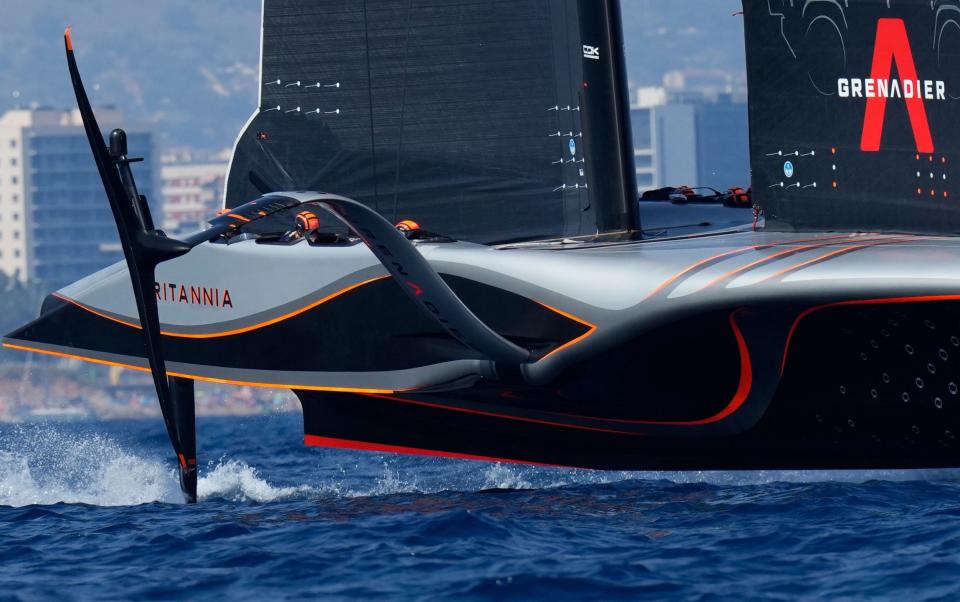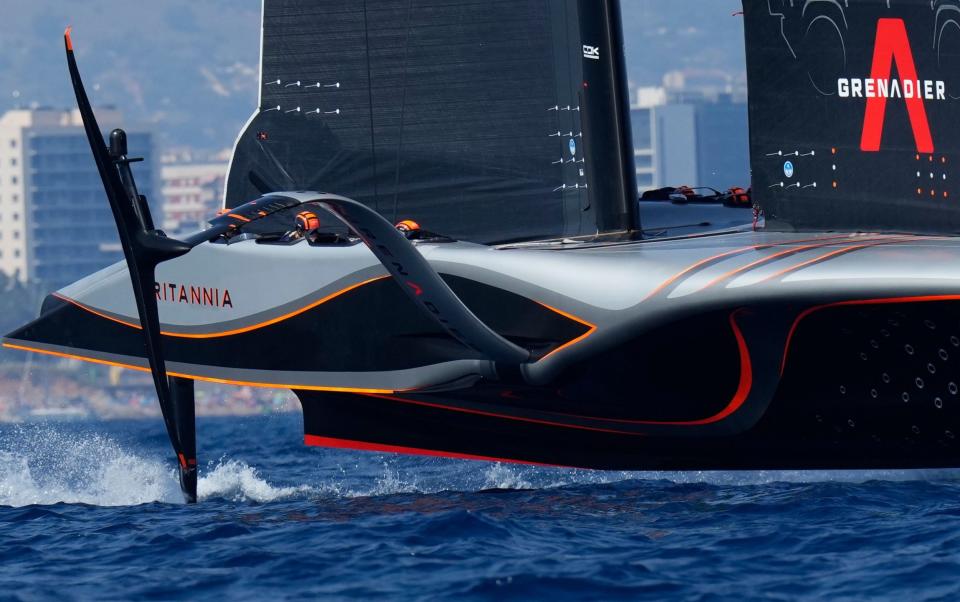
The world’s oldest international sports trophy, best yachtsmen and cutting-edge design and technology come together in Barcelona for the 37th edition of the America’s Cup.
Five boats – from Italy, the United States, Britain, Switzerland and France – will spend the coming weeks racing in the Mediterranean waves to decide who will earn the honour of trying to dethrone the mighty Emirates Team New Zealand for the Auld Mug.
As the two-time defender, the Kiwis chose Barcelona’s choppy waters as the venue and helped establish the rules and boat design for this edition. They also get a guaranteed spot in the final, to be held in October.
The results of three years of work and massive investment will now be put to the test.
“It is starting to get serious in a hurry. We are now racing for keeps,” Ben Ainslie, skipper of British team Ineos Britannia, said.
Here is everything we know about the boats – AC75s – that will be racing…
“Because Barcelona is quite a lightwind venue, you don’t actually want to design foils for going at 60 knots. Acceleration and manoeuvrability are more important. So in terms of top speeds I don’t think we will see anything radically different from the top speeds we saw in the last Cup in New Zealand. Somewhere around 50 knots. But these boats would smash the boats from last time if they actually raced. I guess it’s like Formula One cars. The new boats are much faster over a lap, but they gain that time through cornering speed and acceleration rather than on the straights.”
– Giles Scott (Head of Sailing, Ineos Britannia)
-
This is the second iteration of the AC75 after they were also used in New Zealand at the 36th Cup.
-
The “75” in AC75 stands for 75-feet, the length of the boat. The boats are 16 feet wide.
-
The AC75 is a “foiling” monohull, which means it has only one hull which lifts up out of the water on hydrofoils – or “flies” – when the wind gets above a certain speed, typically around six knots.
-
Although the boats look very similar, there are various changes since the last Cup.
-
The rules have been tweaked partly to improve light-wind performance (frankly, it looked silly when the most technologically-advanced boats in the world fell off their foils in light winds in New Zealand in 2021, bobbing around helplessly) and partly to reduce crew numbers from 11 to eight for cost and performance reasons.
-
The move to reduce the crew means cycle power is again legalised, and “cyclors”, the hybrid sailor-cyclists introduced by Team New Zealand in Bermuda in 2017, return.
Key stats
Eight-man crews
-
Crews have been reduced from 11 to eight since the last Cup.
-
No boat will feature anyone crossing during manoeuvres. That will be the biggest visual change for spectators. Everyone stays where they are, with four sailors on each side of the boat.
-
The crews sit low in their pods, out of the airstream with only their helmeted heads exposed.
-
Each team is slightly different in how and where they deploy their eight men, but every team has a helm, a trimmer and two cyclors on either side of their boat.
-
The British team are unique in that their trimmer-pilots sit at the back of the boat in the aft pods, with the two cyclors between them and the helms in the forward pods.
-
The cyclors’ role is to provide hydraulic power to the boat’s systems, from the foil arms to the mainsail.
-
The Americans are outliers in that their cyclors are “recumbent”, meaning they are sitting/lying backwards, facing up towards the sky. This position sacrifices some power – around 10-20 per cent compared to traditional cyclists – but it does free up their hands to perform secondary functions.
-
But it is likely that on every boat, certainly the British one, the cyclors will all have secondary roles. On Britannia, two of those roles are critical functions but not necessarily sailing-skill oriented (these might be suitable for former rowers who do not have sailing backgrounds). Two you would want to put sailors in there.
F1 crossover
-
The crossover between America’s Cup and F1 is becoming ever greater. Not for nothing is sailing’s most elite competition becoming known as “F1 on water”.
-
Carbon-fibre composites, structural analysis, hydraulic systems, control systems, electronics, data analysis, hydrodynamics and aerodynamics are just some of the overlapping areas.
-
Ineos Britannia have a partnership with Mercedes F1 via joint owners Ineos. The sailing team has offices in Brackley and hundreds of Mercedes staff have been seconded to the sailing project. James Allison is Chief Technical Officer of both teams. Geoff Willis is Technical Director of Mercedes-AMG F1 Applied Science and INEOS Britannia.

Foils
-
Each boat is equipped with a pair of T-foils, on the end of “cant arms”. Around the size of an ironing board, the foils on the AC75 are capable of lifting a seven-tonne boat out of the water.
Sails
-
As in the last Cup, the mainsail is “twin skin”; two membranes held together. Teams are allowed to “endplate”, or seal the mainsail onto the deck of the hull (or platform). This provides performance gains by stopping air flowing under the bottom of the mainsail, which detrimentally reduces the pressure differential between the windward and leeward sides.
Rudder
-
The AC75 rudder allows the boat to change pitch, or trim, by providing lift. This change in pitch moves the stern of the boat closer to the ground, which increases the angle of attack on the main foils. The foils provide lift, which moves the entire platform up.
EMEA Tribune is not involved in this news article, it is taken from our partners and or from the News Agencies. Copyright and Credit go to the News Agencies, email news@emeatribune.com Follow our WhatsApp verified Channel





